ADAPTED FROM A GREAT ONLINE RESOURCE!! THE FOREST PEST HANDBOOK is a publication of the NYSIPM Program and New York State Department of Agriculture and Markets, authored by Elizabeth Lamb and Jennifer Stengle Lerner.

People around the state are noticing gypsy moths…
Specifically European Gypsy moth — Lymantria dispar dispar
(Note: The Asian gypsy moth is a concern in some parts of the United States but is NOT currently an invasive pest in New York.)
The European gypsy moth was accidentally introduced into Massachusetts in l869. By 1902 this pest was widespread in the New England states, eastern New York, and regions of New Jersey.
Generally from late July through early September, female moths will lay egg masses on bark, firewood, exterior of campers and outdoor equipment and be easily transported. The gypsy moth is an important insect pest of forest and shade trees in the eastern United States. Heavy defoliation by the larval stage of this pest causes stress to infested host plants. Adult male moths are dark buff and fly readily during the day. Females are white with black, wavy markings, have robust abdomens, wingspans up to 2 in ches (50 mm) but do not fly.
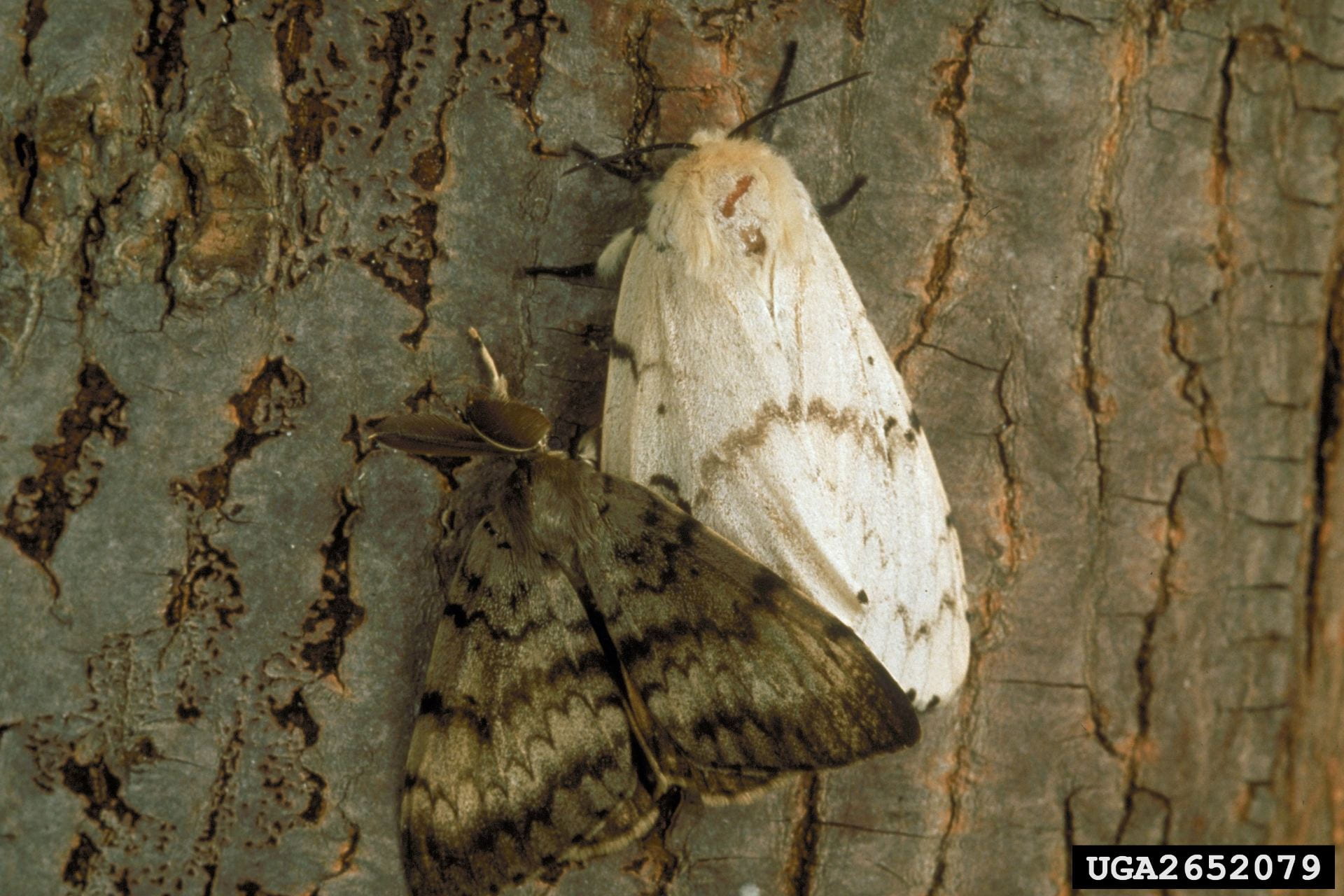
male(left) and female (right) Asian gypsy moths – shown for comparison
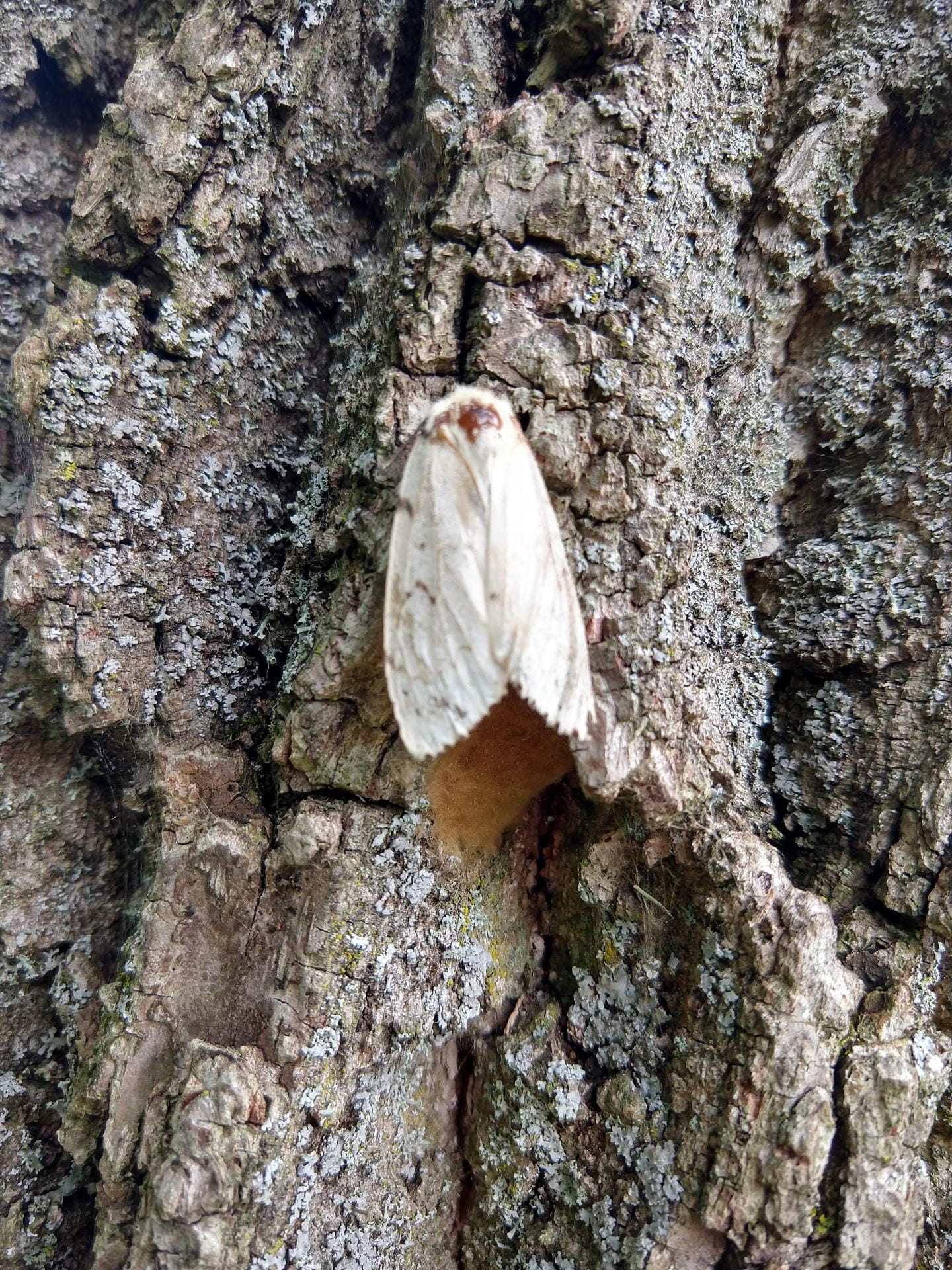
Egg masses may be found on trees, rocks and other surfaces from early April through mid May. They are light tan, and the eggs inside are black and pellet like. Each mass may contain 400-600 eggs.
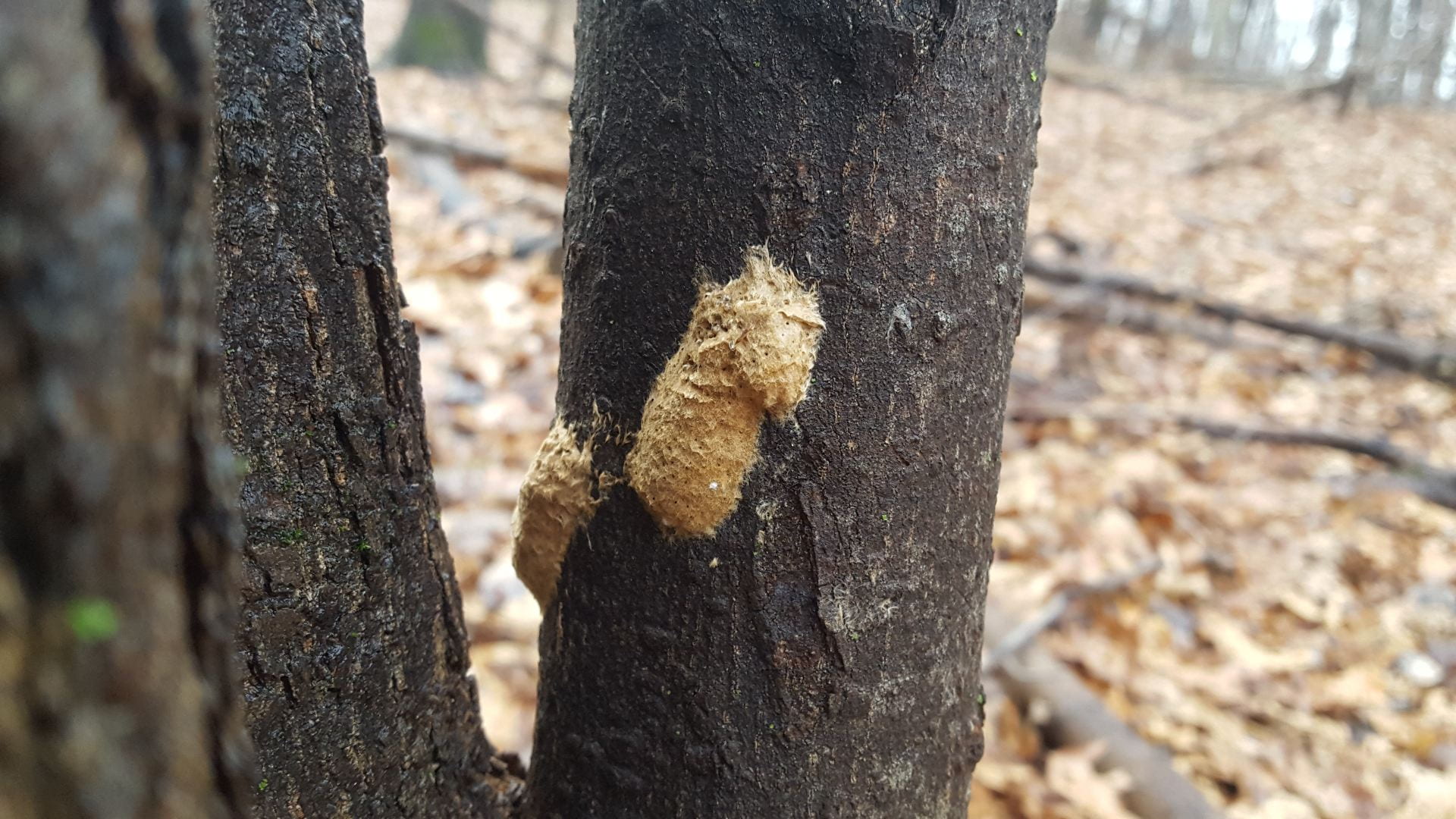
The larval stage (caterpillar) is hairy, and a mature larva is 2-2.5 inches (50-65 mm) long with a yellow and black head. Behind the head on the thorax and abdomen are five pairs of blue spots (tubercles) followed by six pairs of brick red spots. Young larvae feed on foliage and remain on host plants night and day. Around mid April, larvae emerge from egg masses. In late May, when about half-grown, larvae change their behavior and usually feed in the trees at night, and move down to seek shelter in bark crevices or other protected sites during the day. Larvae molt numerous times until full grown at 2-2.5 inches. Larval feeding is THE STAGE WHEN TREE DAMAGE OCCURS. Feeding on leaves can last for up to six weeks. Look for defoliation of host trees. You may also hear frass dropping from trees (believe it or not…), though that may come from feeding by other species of caterpillars. Caterpillars may move down into bark crevices during daytime and return to canopy feed at night.
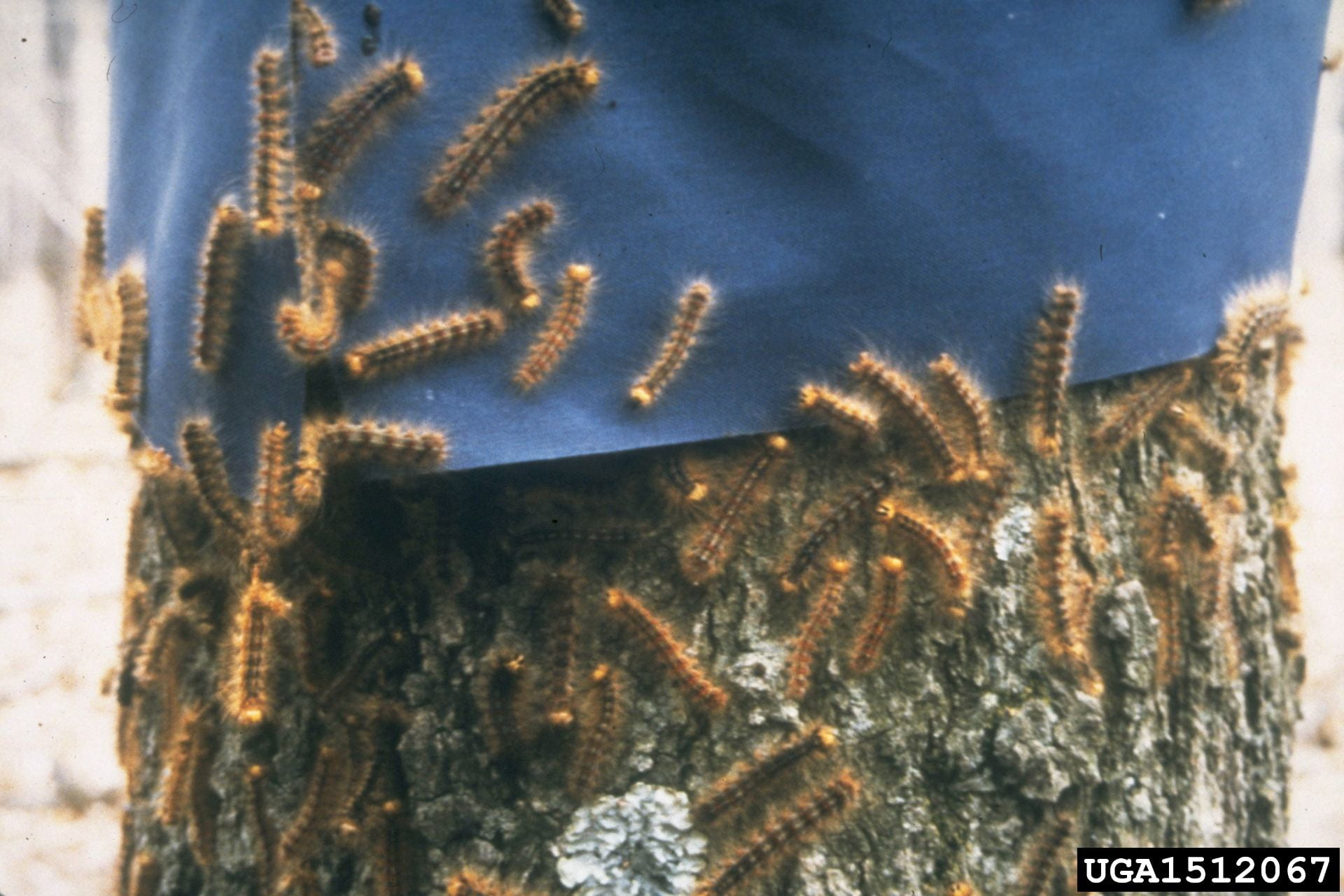

The pupal stage is dark reddish-brown and is held in place to some object by small strands of silk. Pupation is generally in July or early August. This year, adults have been seen in July.

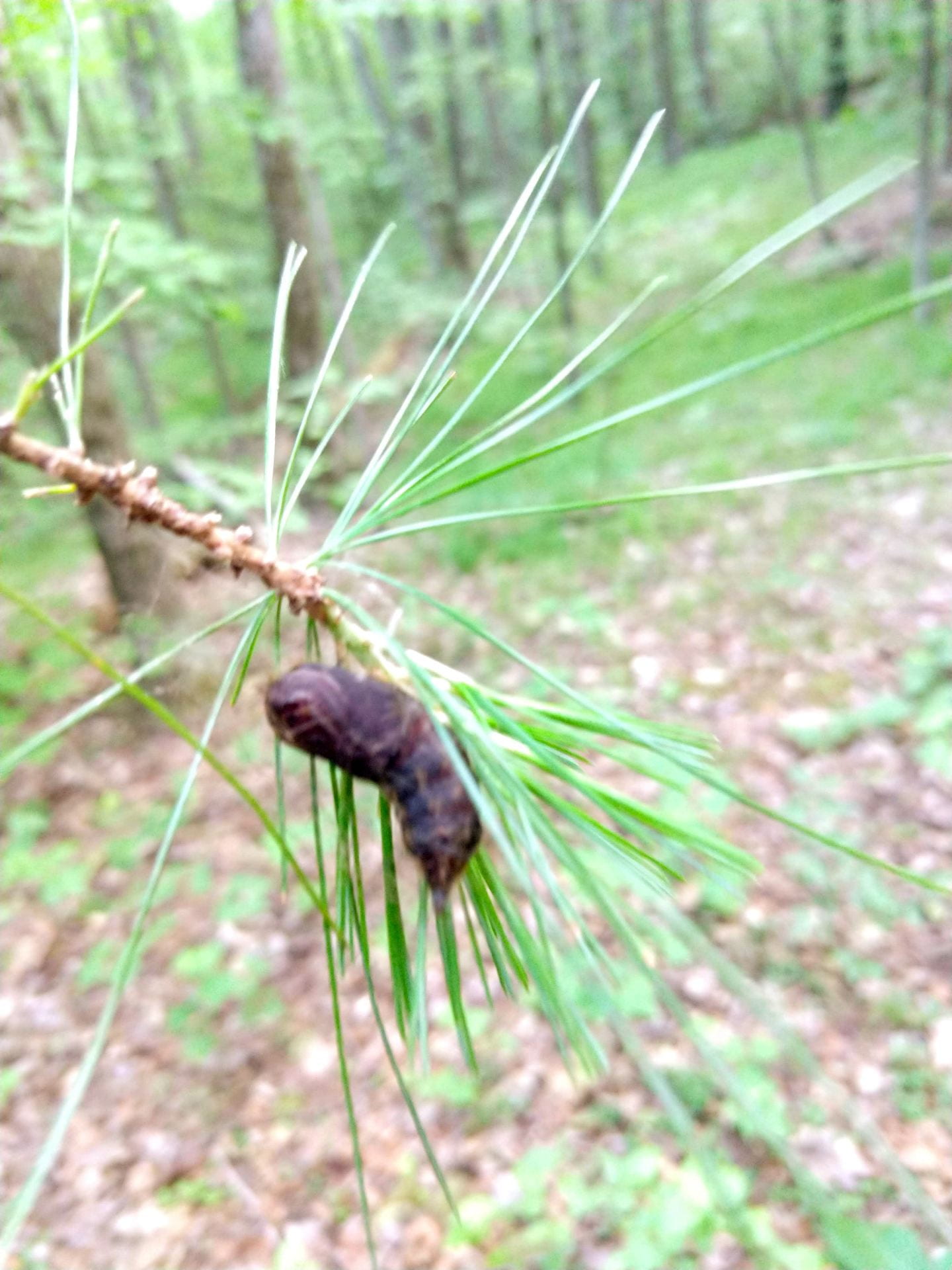

Which tree species does this pest damage? PLENTY!
Alder (Alnus spp.) Aspen (Populus spp.) Gray birch (Betula populifolia) White birch (B. papyrifera) Hawthorn (Crateagus spp.) Larch (Larix spp.) Linden (Tilia spp.) Mountain ash (Sorbus spp.) Oaks (Quercus spp)Lombardy poplar (Populus nigra) Willows (Salix spp.) Witch-hazel (Hamamelis spp.) Beech (Fagus spp.) Red cedar (Juniperus spp.) Chestnut (Castanea spp.) Hemlock (Tsuga spp.) Plum (Prunus spp.) Pine (Pinus spp.)
What to do? The time to act is/was when egg masses can be found and destroyed (fall, winter and spring), or when young larvae can be reduced in numbers. If you’ve seen a lot of adult moths, you might want to take a look for egg masses on your trees in the fall and winter.
Suggestions from the New York State Department of Environmental Conservation